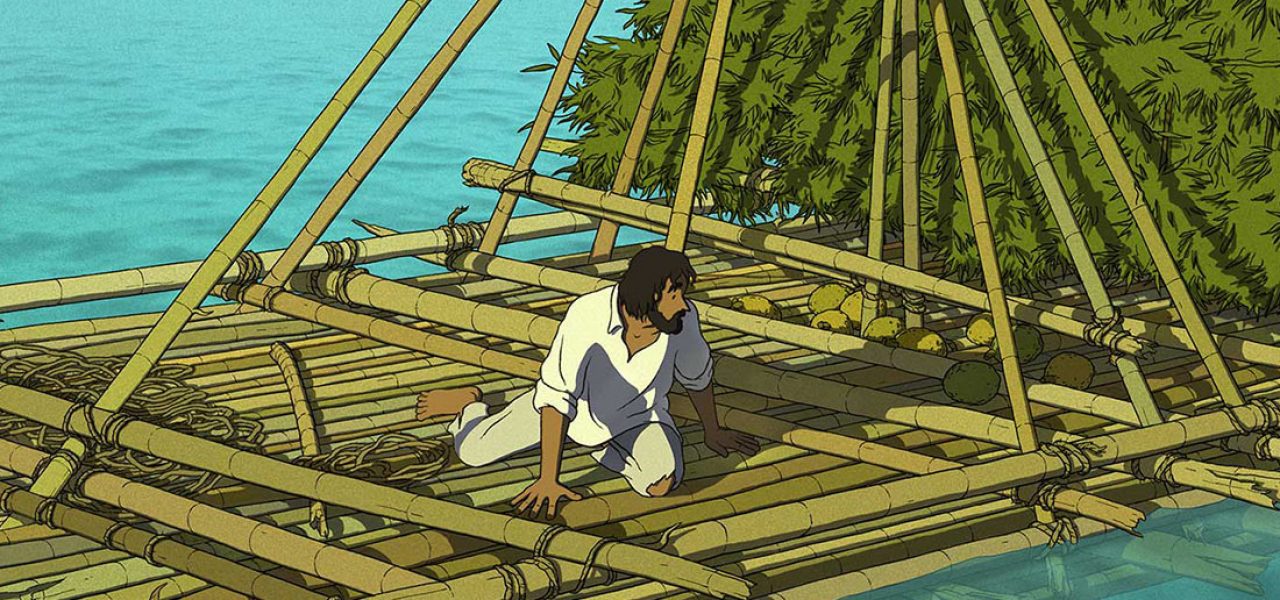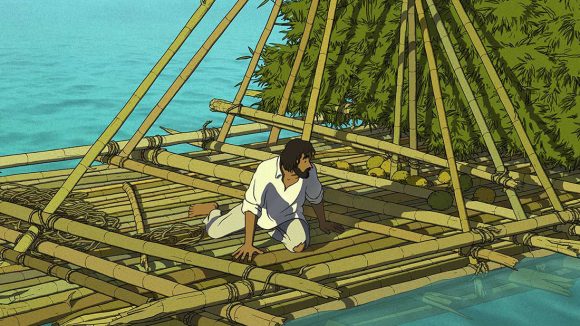

Michael Dudok de Wit’s ‘The Red Turtle’: 5 Interesting Facts About The Film’s Production
Of the five Academy Award nominees in the best animated feature category this year, the sole entry that is primarily hand-drawn is Michael Dudok de Wit’s The Red Turtle.
It’s the first feature directed by Dudok de Wit, whose short films The Monk and The Fish (1994) and Father and Daughter (2000) are widely considered to be contemporary classics. For The Red Turtle, a cross-continental co-production between Japan’s Studio Ghibli and numerous European parties (Why Not Productions, Wild Bunch, CN4 Productions, Arte France Cinema, Belvision Coproduction), the challenge for Dudok de Wit was to maintain his idiosyncratic and minimalist aesthetic while working with a feature film crew.
Dudok de Wit met the challenge by designing a production pipeline that addressed the graphic needs of his film. Despite the attachment of Studio Ghibli’s name to the film, it’s important to point out that the entire film was animated in France at Prima Linea Productions, a company that has studios in both Paris and Angoulême. In this piece, we explore five unique aspects of Dudok de Wit’s production.
1. Michael Dudok de Wit initially planned to draw the film on paper, but switched to digital 2D.
The film was drawn in TVPaint software on Cintiq tablets, the first time that Dudok de Wit had made a film by drawing digitally instead of on paper. Initially, Dudok de Wit had intended to draw on paper and then scan in the drawings, and between January and September 2011, he worked on a series of drawn-on-paper animation tests at Prima Linea’s facilities in Paris.
The five test shots he created were intended to figure out the animation style, and determine aspects of the line, choice of tools, and treatment of the image in compositing. However, in fall 2011, he visited the studio’s Angoulême facilities to see a work-in-progress of Wolfy, the Incredible Secret, a film animated on Cintiq tablets. The trailer for that film is below:
He was encouraged to take a Cintiq back to his home in London and try some new tests. Dudok de Wit came to the conclusion that “it’s more economical, gives you more creative freedom and increased control for retouching,” as he told journalist Bernard Génin. “The line of the digital pencil was more beautiful and that convinced us.”
2. The backgrounds were drawn with charcoal on paper.
The backgrounds of The Red Turtle were drawn with charcoal on paper, “very freely, with broad strokes smudged with the palm of the hand,” said Dudok de Wit. “This artisanal quality was very important and gave the image a lovely, grainy texture.” Those drawings were then scanned, and color was added in Photoshop. Light and shadow effects were composited into the scenes afterward. The layout supervisor was Eric Briche, background supervisor was Julien De Man, and color supervisor was Emma McCann.

3. The film had a smaller animation crew than usual for 2D European features.
The animation phase of European animated features typically takes around 10 months, but Dudok de Wit wanted to work with a smaller team of around a dozen animators to maintain consistency of style and to be able to personally supervise all the artists. (There were also between 30-40 assistant animators.) The schedule for the animation production thus took more than twice as long as a typical European feature, extending to around two years. There was an additional team of another 10 or so animators who only worked on special effects, like waves, backwashes, storms, and smoke. (The sfx animation team was supervised by Mouloud Oussid.)

4. No rotoscope was used by the animators.
The controlled character animation style of The Red Turtle has led many viewers to wonder if rotoscoping was involved. Live-action reference was shot, but it wasn’t rotoscoped, according to the film’s chief animator Jean-Christophe Lie. (It’s similar to how live-action reference was used on classic Disney films like Peter Pan and Sleeping Beauty, though the effect is markedly different.) “We used what is termed analytic animation: actors are filmed and their strongest poses are isolated,” Lie told Bernard Génin. “The camera angles are readapted in the layout, then everything is redrawn, as you would do in a life drawing class. The footage of the actors is only used as a reference.”
5. The turtles and rafted were cgi.
The turtles and raft were modeled and animated in 3D using Autodesk 3ds Max. Afterward, the turtle shell texture, which was created in Photoshop, was integrated onto the character using Blackmagic Design’s Fusion. For the linework on the cg turtles and raft, the cg models were retraced frame-by-frame. “The hardest part for the animators was to recreate the projected shadows that followed the curves of each bamboo shaft and which had to be animated manually,” said Lie. The linework was subsequently integrated over the cg, again using Fusion.

The Red Turtle is distributed in North America by Sony Pictures Classics. It’s currently in limited release in U.S. theaters.

.png)